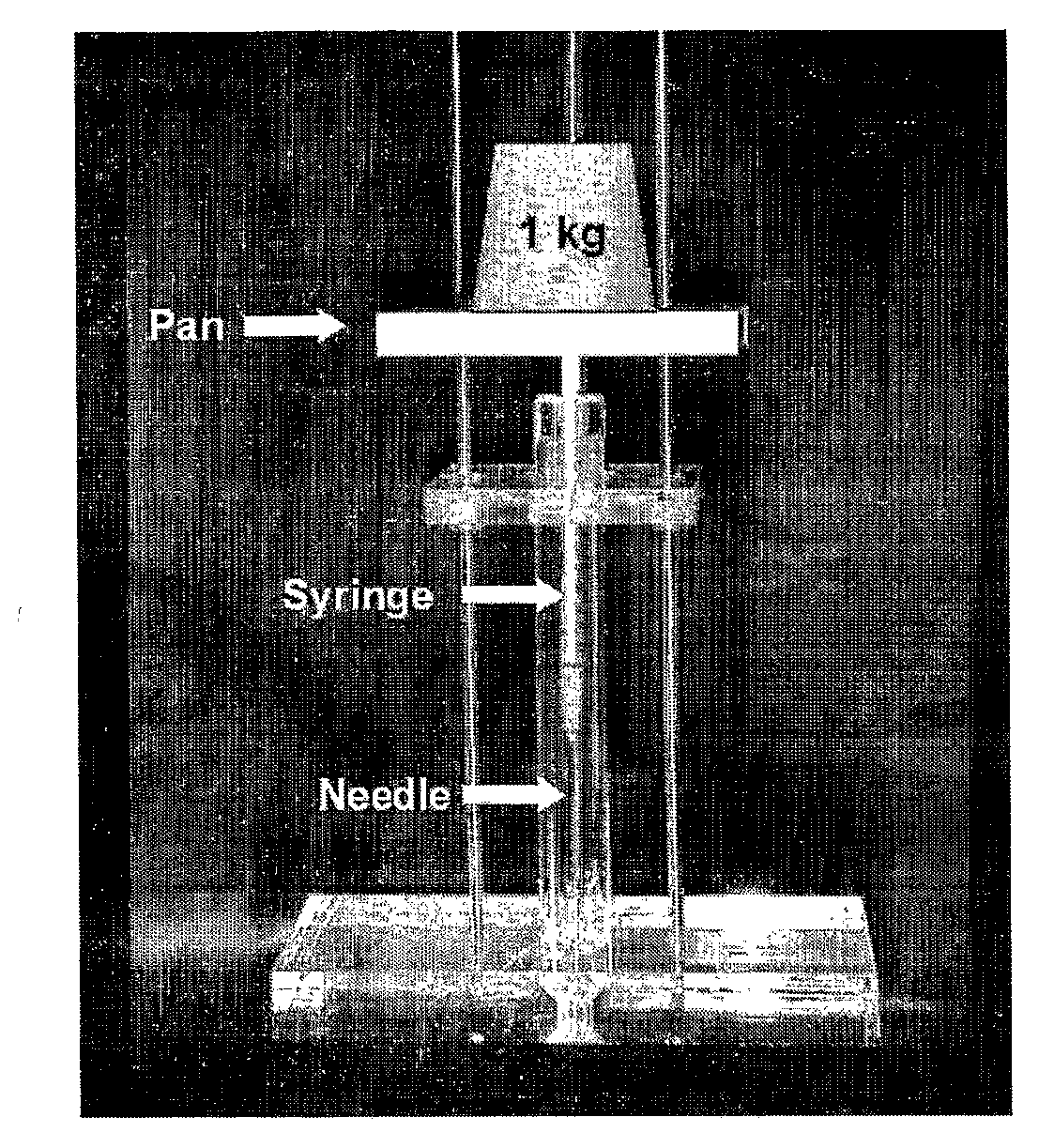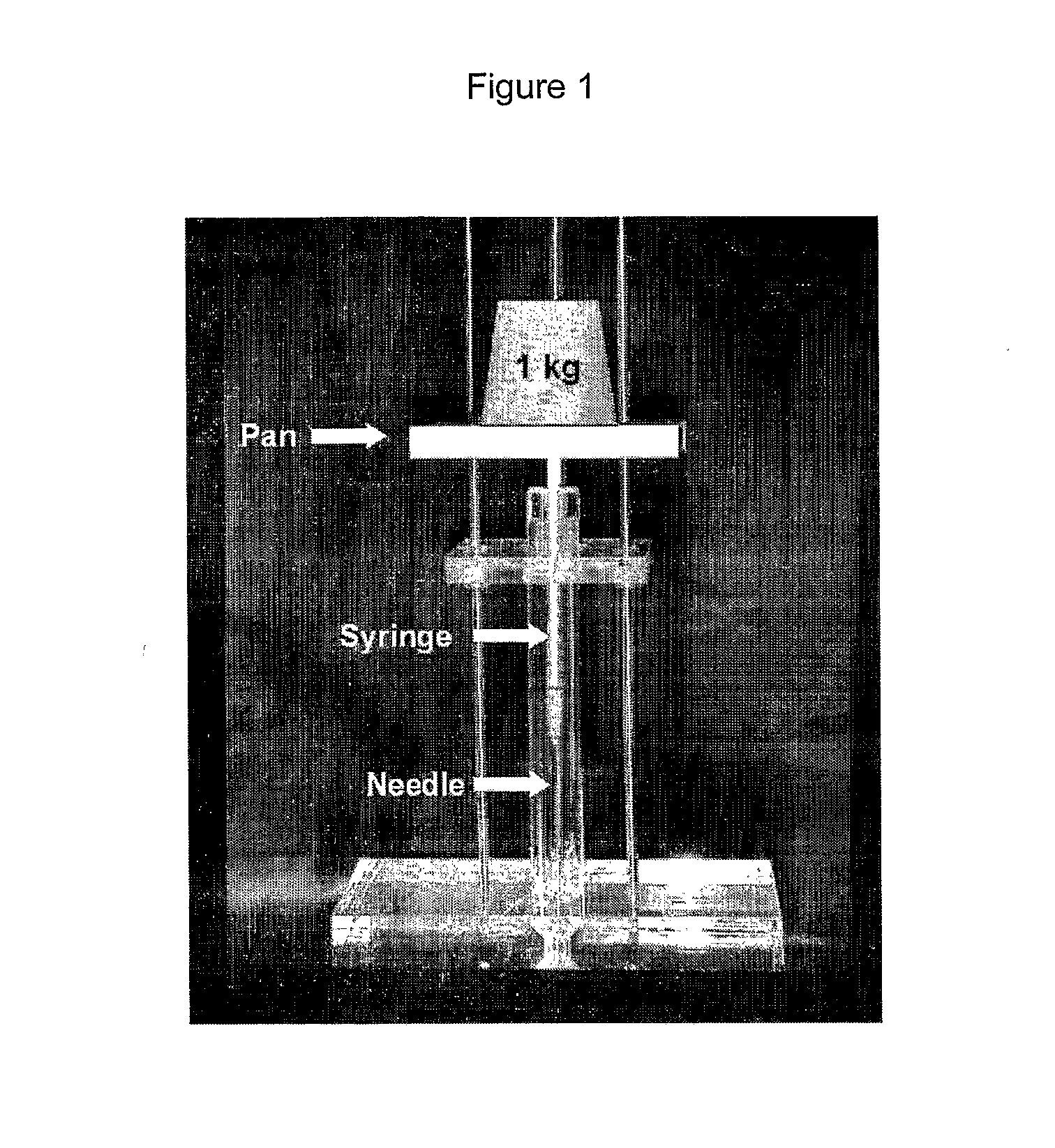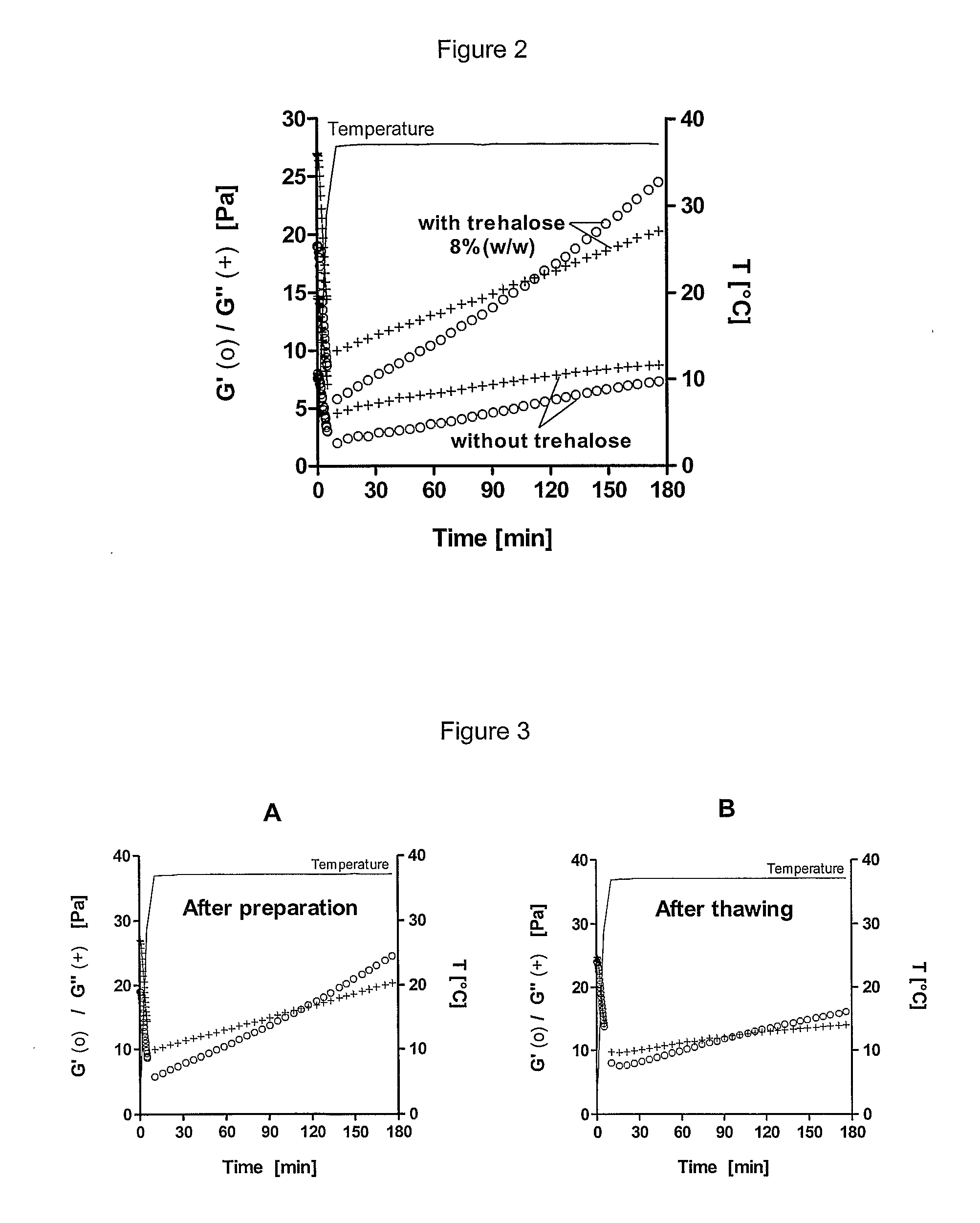Thermosetting Neutralized Chitosan Composition Forming a Hydrogel, Lyophilizate, and Processes for Producing the Same
a technology of chitosan and lyophilized chitosan, which is applied in the direction of biocide, plant growth regulator, pharmaceutical non-active ingredients, etc., can solve the problems of reducing the mechanical properties of the hydrogel, reducing the use value of chitosan/-gp hydrogel, and reducing the use value of the hydrogel. , to achieve the effect of convenient storag
- Summary
- Abstract
- Description
- Claims
- Application Information
AI Technical Summary
Benefits of technology
Problems solved by technology
Method used
Image
Examples
preparation example 1
Preparation of a Reacetylated Chitosan “Fagal Lot 21” Having a DD of 61% According to the Method Disclosed in WO-A-2005 / 097871
[0123]25.5 gr of chitosan flakes (Sigma-aldrich, Saint Louis, Mo., USA, product number 41,941-9, batch 14418LB) were dissolved in 1 liter of a solution of acetic acid 10% and methanol (50 / 50) for one hour under stirring. 550 ml of methanol were added. After 2 hours stirring, the mixture was filtered through a 100 μm filter to eliminate insoluble particles. The viscous solution was then dialyzed (Spectra / Por® 1 Dialysis Membranes 6,000-8,000 MWCO, no132665, Spectrum Laboratories, Rancho Dominguez, USA) against deionized water for 72 hours, with daily change of the water. The solution was then filtered through a 5 μm filter.
[0124]Under stirring, 400 ml of NH4OH 0.2M / methanol (50 / 50) were added to induce precipitation. After 1 hour stirring, the suspension was filtered through a 100 μm filter. The precipitate was washed with methanol until neutral. The purified ...
preparation example 2
Preparation of a Reacetylated Chitosan “Fagal Lot 25” Having a DD of 47% According to the Method Disclosed in WO-A-2005 / 097871
[0127]Chitosan flakes (Sigma-aldrich, Saint Louis, Mo., USA, product number 41,941-9, batch 14418LB) were purified as in Preparation Example 1. Chitosan was then reacetylated with a solution made of 2.0 ml acetic anhydride and 200 ml methanol according to the same procedure as in Example Preparation 1.
[0128]The obtained reacetylated chitosan had a DD of 47% (measured by NMR).
example 1
Preparation of a Composition According to the Present Invention, Containing 2% w / w of Reacetylated Chitosan (DD=47%RMN) Provided by Novamatrix and 8 w / w % Trehalose
[0129]700 mg of reacetylated chitosan provided by Novamatrix (batch FU-507-03), with a DD of 47% (measured by RMN) were autoclaved in suspension in water at a concentration of 4% (w / w). 145 μl HCl were added and the suspension was kept under stirring for 18 h at room temperature to allow complete chitosan solubilization. 3.09 g of trehalose were solubilized in 6.5 ml NaOH 0.15M. This solution was cooled down in an ice bath and added dropwise under stirring to the cooled down chitosan solution. The pH of the gel was then adjusted to 6.8 by dropwise addition of cooled down diluted NaOH. Finally, cold water was added to obtain a total mass of 35 g. The transparent hydrogel obtained showed an increase of its viscoelastic behaviour following time at 37° C., as illustrated in FIG. 2 and FIG. 3A and had a gelation of time of 111...
PUM
| Property | Measurement | Unit |
|---|---|---|
| Temperature | aaaaa | aaaaa |
| Fraction | aaaaa | aaaaa |
| Fraction | aaaaa | aaaaa |
Abstract
Description
Claims
Application Information
 Login to View More
Login to View More - R&D
- Intellectual Property
- Life Sciences
- Materials
- Tech Scout
- Unparalleled Data Quality
- Higher Quality Content
- 60% Fewer Hallucinations
Browse by: Latest US Patents, China's latest patents, Technical Efficacy Thesaurus, Application Domain, Technology Topic, Popular Technical Reports.
© 2025 PatSnap. All rights reserved.Legal|Privacy policy|Modern Slavery Act Transparency Statement|Sitemap|About US| Contact US: help@patsnap.com



